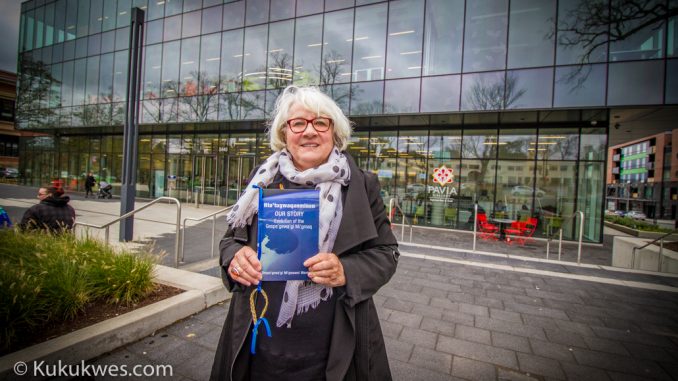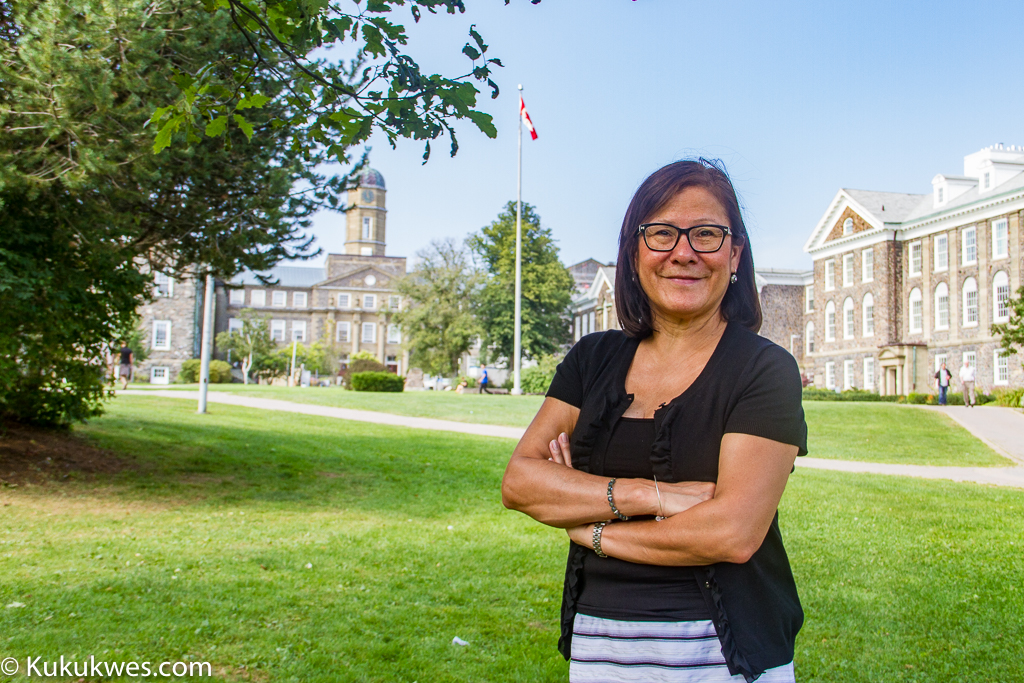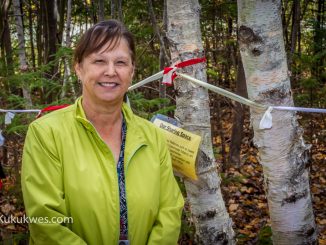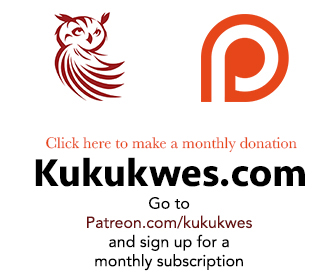
Danielle Cyr, a specialist in Algonquian languages and comparative linguistics, is one of the co-authors of the book, Nta’tugwaqanminen, Our Story – Evolution of the Gespe’gewa’gi Mi’gmaq.
The book, published by Fernwood Press, chronicles the entire history of the Mi’kmaq in the Gaspé region which goes back to prehistoric time to present day.
Cyr has been involved in research with the Mi’gmawei Mawiomi Secretariat since 2002. The Secretariat represents the Mi’kmaw communities of Listuguj, Gespeg and Gesgapegiag in Quebec.
The Secretariat’s research into the history of the Mi’kmaq in the Gaspé region became the basis for the book. Kukukwes.com recently interviewed Cyr about the book.
Kukukwes.com: What is this book, Nta’tugwaganminen – Our Story: Evolution of the Gespe’gewa’gi Mi’gmaq, about?
Danielle Cyr: This book is about everything that concerns the Gespe’gewa’gi Mi’gmaq starting from their early pre-history to their historical period including the archeology, all their place names, their world view and values and rules of conduct as Mi’kmaq.
Then there (are) the treaties made with the British authorities and then there is the process of dispossession from their territories from the same British authorities.
It also includes aboriginal rights and contemporary Mi’kmaq (of Listuguj, Gespeg and Gesgapegiag), how these three communities live now, what’s their aim, their goals, their quest, their problems and their way of living.
Kukukwes.com: What was the whole purpose of putting together the history of the Gespe’gewa’gi Mi’gmaq?
Danielle Cyr: There was a political purpose which was to reply to the governments, federal and provincial, who denied the pre-historical presence of the Mi’kmaq in the Gespe’gewa’gi (Gaspé Peninsula). So we had to prove to them that, yes, the Mi’kmaq were there.
Then there is the purpose of reclaiming the history so that the Mi’kmaw (youth) could get to know that history from a Mi’kmaw perspective. So, because it was from a Mi’kmaw perspective, the third goal was so that the Mi’kmaq could speak to the non-Mi’kmaq people about themselves, their history and their rights.
So, because it was from a Mi’kmaw perspective, the third goal was so that the Mi’kmaq could speak to the non-Mi’kmaq people about themselves, their history and their rights.
Kukukwes.com: What kind of impact has this book had on the Mi’kmaq and non-Mi’kmaq in the Gaspé area?
Danielle Cyr: The impact on the Mi’kmaq is certainly a process, I would say, re-empowerment because now they know exactly in a documented way where they came from, how they occupy the territory in pre-historical and historical time.
Because you know, all the indigenous people were taken away from their territory and although they didn’t lose contact in their dreams and desires, they had sort of lost certain knowledge about the land. So (we wanted) to bring that back and it really changed. They’re so happy now that they have something written down to rely on to explain their place and their role and their values to other communities.
The non-Mi’kmaq who are now starting to read the book are really happy because it gives them an accurate knowledge of what happened, what is happening and what will continue. What happens will change now because of that.
Kukukwes.com: You mentioned that Mi’kmaq in the area had to prove they existed there in the Gaspé region since time immemorial. How does one go about proving that?
Danielle Cyr: That was the difficult point that as long as the knowledge about them and their arrival and their constant presence on the territory had not been documented in a whole way. In its entirety, no one really knew.
Then it was just rumours that would try to convince them that they were not there. They knew they were there but they had no way to prove it (other than relying) on their ancestral knowledge. Even the ancestral knowledge was scattered and now, it has been brought back together and it makes sense.
Kukukwes.com: How important was it to include Mi’kmaq elders’ voices in this book?
Danielle Cyr: It was important because the Mi’kmaq in our area seem to everybody to be confined in their reserve and we always feel we don’t see them on the territory.
Through interviewing the elders, we realized that there is still extensive knowledge of the hinterlands and the resources and that the Mi’kmaq are still there hunting, gathering, fishing.
Kukukwes.com: What do you hope people will get out of reading this book?
Danielle Cyr: I think people will get a notion and knowledge about how the history unfolded to the Micmac disadvantage. Non-aboriginal, non-Mi’kmaq people may finally understand that to be Mi’kmaq, you need access to your territory for its recourses but also because it is engrained in the Mi’kmaw identity that they have a duty to take care of the territory. If you ban them from the territory, they cannot be who they are.
That is what their claim includes. They want their fair share of the resource. They want to be able to exercise their right in caring for the territory. That means they have to be part of all the consultations about the territory. I think that knowledge that will be gained by the people on both sides is absolutely important for the progress of our country and each cultural group as well.




